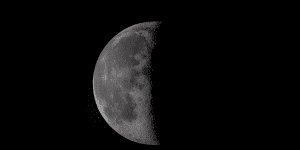The What’s Above Us Video Series is an engaging resource for learning about the Earth’s atmosphere and the space beyond. Each video explores a different feature of the sky and provides examples of the interconnected systems that exist above us. Most videos also include a visual representation of the topic, like the water cycle, to show how each aspect of the sky above us is formed.
- Part 1: Layers of the Atmosphere
- Part 1 explores each layer of the atmosphere and how they make up a protective surface for the Earth. Viewers will learn why each layer is important to the atmosphere and how important the atmosphere is to us.
- Part 2: Water Cycle
- Part 2 explores the different phases in the water cycle, along with the concepts involved in the moving from one stage to another. Viewers will learn how the cycle moves along and what happens to the water in each stage from ground to sky.
- Part 3: Cloud Formations
- Part 3 explores the different types of cloud formations, how they form, and where they can occur in the sky. Viewers will learn how to identify the different cloud types and what each cloud means for the weather.
- Part 4: What Causes The Seasons
- Part 4 explores how the Earth’s tilted axis and its orbit around the sun produces different seasons in different times of the year. Viewers will learn what happens when the Earth completes rotations and how the tilt of the Earth, impacting our distance from the sun, changes what we experience as the weather.
- Part 5: Earth’s Moon
- Part 5 explores the different aspects of the moon, including the dark side, the terminator (the dividing line between dark and light), and the craters that can be seen in pictures. Viewers will learn how to identify different areas of the moon by name and learn what makes them unique.
- Part 6: Phases of the Moon
- Part 6 explores the different phases of the moon, from New Moon to Full Moon to Waning Crescent, and explains how the direction of the light from the Sun impacts the moon’s visibility and shape appearance. Viewers will learn the order of the phases of the Moon and what each phase generally looks like so they can apply their knowledge simply by gazing at the Moon.
- Part 7: Moon and the Tides
- Part 7 explores how the Moon’s gravitational pull impacts Earth and causes the tides to reach high and low points. This video also explores how geographic regions and time of day play a factor in the changes in tides. Viewers will learn important terms, like gravity and density, and how we can see those concepts at work in the universe and on Earth.
- Part 8: Earthshine and Eclipses
- Part 8 explores how eclipses work, the different types of lunar eclipses, and the proper protection for eyes when viewing an eclipse. This video highlights how the view of an eclipse changes based on the viewer’s geographical location and the key differences between a lunar and solar eclipses. Viewers will learn important terms, like “earthshine” and “syzygy”, and how celestial bodies interact to form an eclipse.
- Part 9: Astronomy
- Part 9 explores the different aspects of astronomy, with a focus on celestial bodies in space —like stars, planets, and the sun. This video also displays how these different celestial bodies interact together and intersect in the same space. Viewers will learn important terms like “asteroid” and “shooting star” to show how some concepts can be represented differently than what they actually are.










